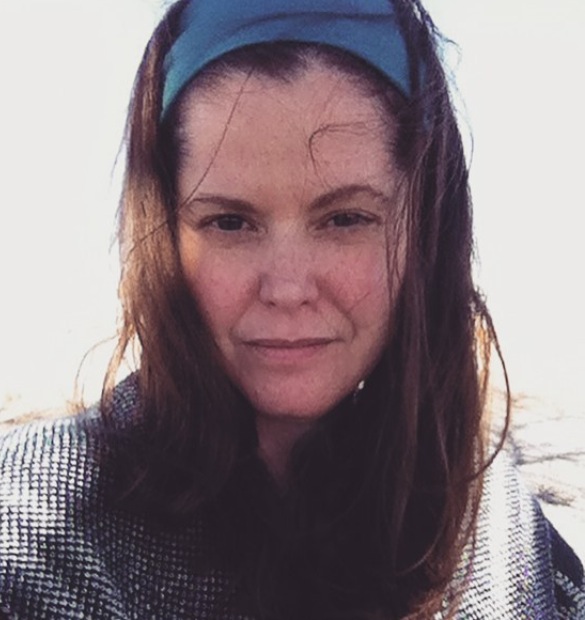Thursday, September 21, 2017
Leni
Leni Riefenstahl was a major force at St. Martin's Press, the small house that was quickly becoming a midsized one during my apprenticeship. She'd become our shot at entering the grown-up world of bestsellers about infamous personalities from history that give a house prestige and win awards. The attention over a hardcover edition drives sales, and a major hit is something a house can make a profit from for years, which meant everyone who could get involved did so most vocally.
I was first introduced to her in the art department. One of my friends was jealous that another art director he considered less talented was designing the cover, and in our back-stabbing world of "celebrity" designers, you're only as good as your last cover design. It wasn't lost on me at the time that we mirrored her world of uneasy alliances made in service to art and design, because she'd worked as a filmmaker during Hitler's regime.
After the hardcover edition went to paperback, my friend finally got to revise the design to meet his standards, and that's when we talked about Nazi Germany; at his computer, while he colorized her cover photo. He told me he could relate to her conversion to fascism (!!) through the carefully fabricated military outfits. "How seductive it must have been to a poor farm kid back then", he said to me as the son of Chinese immigrants who owned a laundry business. The leather boots, those sharp shoulders on the jacket that fit just so...
Huh. That's....eerie, dude. The first "Leni" art director would come out of the closet years later, after dumping his very masculine wife and their adopted Asian baby, before my friend finally came out as ADHD and OCD. On the heels of those twin disclosures, I could finally see what kind of monst...er, person, would be attracted to stage sets full of blond boys in matching military dress, and just like then, I still don't like what I heard as an excuse for genocide through collusion. What horror!
It brought me back to the importance of authenticity, and how very important it is that we tell the truth about our histories, hard as that may be. For my family, we finally got the happy ending we were seeking, not that we had sat around waiting for validation from anyone. My father's family had told us the truth about our Acadian Metis origins as the first generation of Europeans to intermarry with the Micmac people of Nova Scotia, because that's exactly what my dad's East Asian/Native American DNA reflects: the time period of first contact in Canada between 1780-1600s. BTW, my little native percentage showed up as a Yakutian from East Siberia before our ancestors crossed the Bering land bridge many moons ago.
And so it was no surprise to me that I remembered hearing the art directors talk about Leni Riefenstahl's fake autobiography, because it was said she had her birth certificate forged so she could profit from Hitler and the Nazi Regime as an artist. So, that isn't actually in the book? I had to know our culpability. The art director told me the editor wanted it in the epilogue, but he'd been shot down. Well...what is it? "She lied about not being Jewish, and he's Jewish, too." Oh. That's kind of big deal.
As I wrote this piece to you, I thought about my part in the process when I relieved myself of debt from a honest lifetime spent on basic food, clothing, and shelter, bought at the time with my bargain salary of $19,500/year. I know I've paid it back in full, and then some.
The real question is: have you?
Thursday, September 14, 2017
Apothecary Rose
Until a certain female protagonist caught my attention. Because I produced the advance reader copies sent out to reviewers, I usually knew the manuscript well enough to talk about it, and because of the lulls in my work, I actually read most of them, too. We did a bunch of medieval murder mysteries that sought to capitalize on the commercial success of Umberto Eco's "The Name of the Rose". This one began similarly, but with a twist: the prime suspect was also the chief investigator. She was a female apothecary working as a laywoman within abbey walls, tending to the same medicinal garden that produced the deadly herbal used as the murder weapon, found on her shelves. Neat plot twist, right?
I was reminded of my own botanist mother who'd cried foul play over my child's bouquet, picked to cheer her up during one of her many "moods". "Agh!" She dramatically cried out when I presented my flowers to her, at her bedside. "That's 'deadly' nightshade!" Oh? Pretty purple flowers. "Are you trying to poison me?!" Uh, no...but, thanks for the tip. End scene, cut, aaannnd...fade out.
Aside from the theater of her daily undoing, I learned a lot about the power of plants from her. She often knew their Latin names by heart, and if we couldn't readily identify the wildflowers we found, we'd look them up. She knew the trees around us by the shape of their leaves, and the colors they changed in the fall. It was a beauty and magic to me that lengthened into homesickness for the forests of my northern woods. Never would I forget the shape of sunlight slanting through the trees, or the happy yellow of a early spring daffodil.
It's become grounding to me with every move I've made, a steadying process that keeps me down-to-earth in a sea of change; collecting specimens, looking them up, and then pressing them between the pages of books. That is the strength of our collective gifts as a mother and daughter: a knowledge that is straight and true.
And so very beautiful.
Subscribe to:
Comments (Atom)



